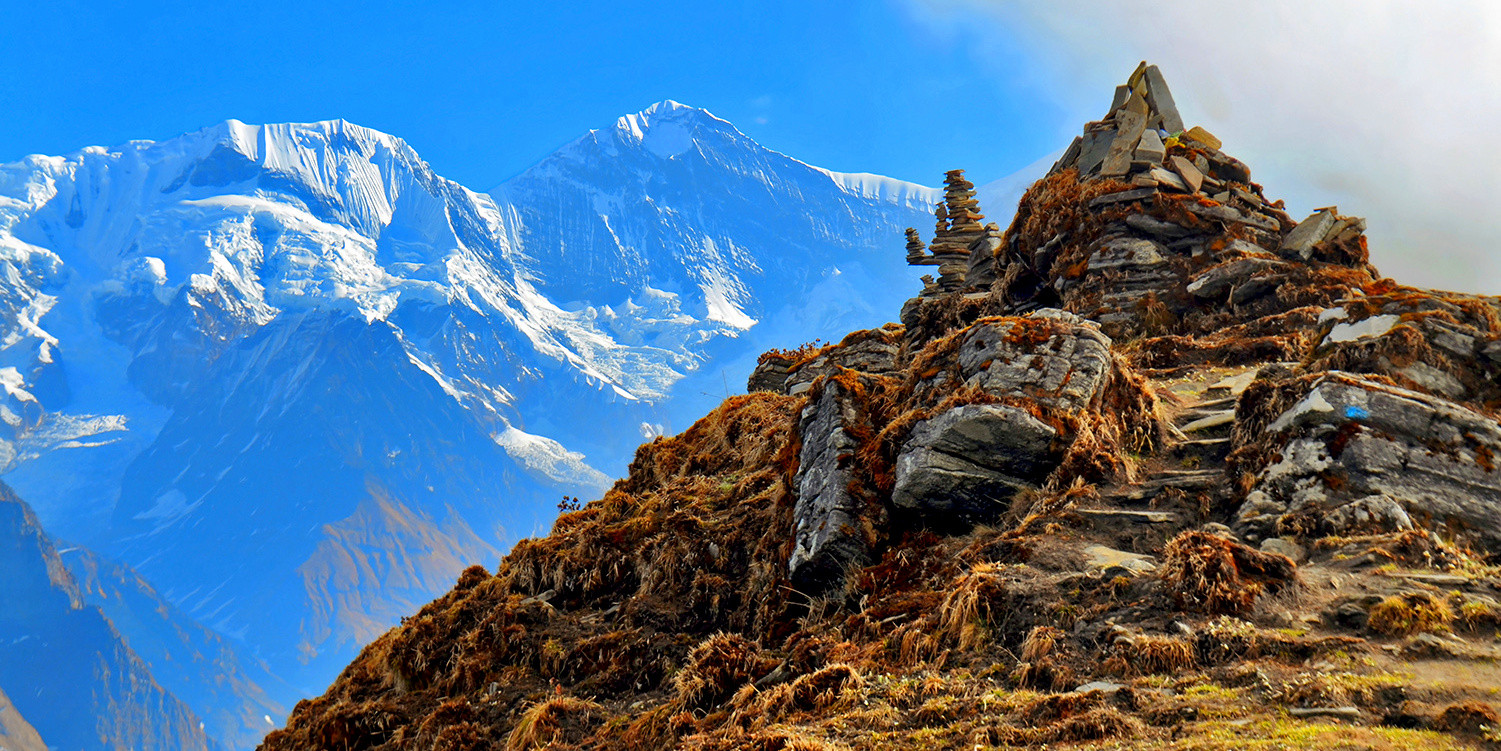Kathmandu Valley
Kathmandu Valley stands as a spectacular testament to Nepal’s rich cultural, historical, and religious heritage. Nestled in the heart of Nepal, the valley is surrounded by a tier of green mountain walls and dotted with terraced fields. The vibrant capital city of Kathmandu, along with the cities of Patan and Bhaktapur, forms the economic and cultural focal point of the valley.
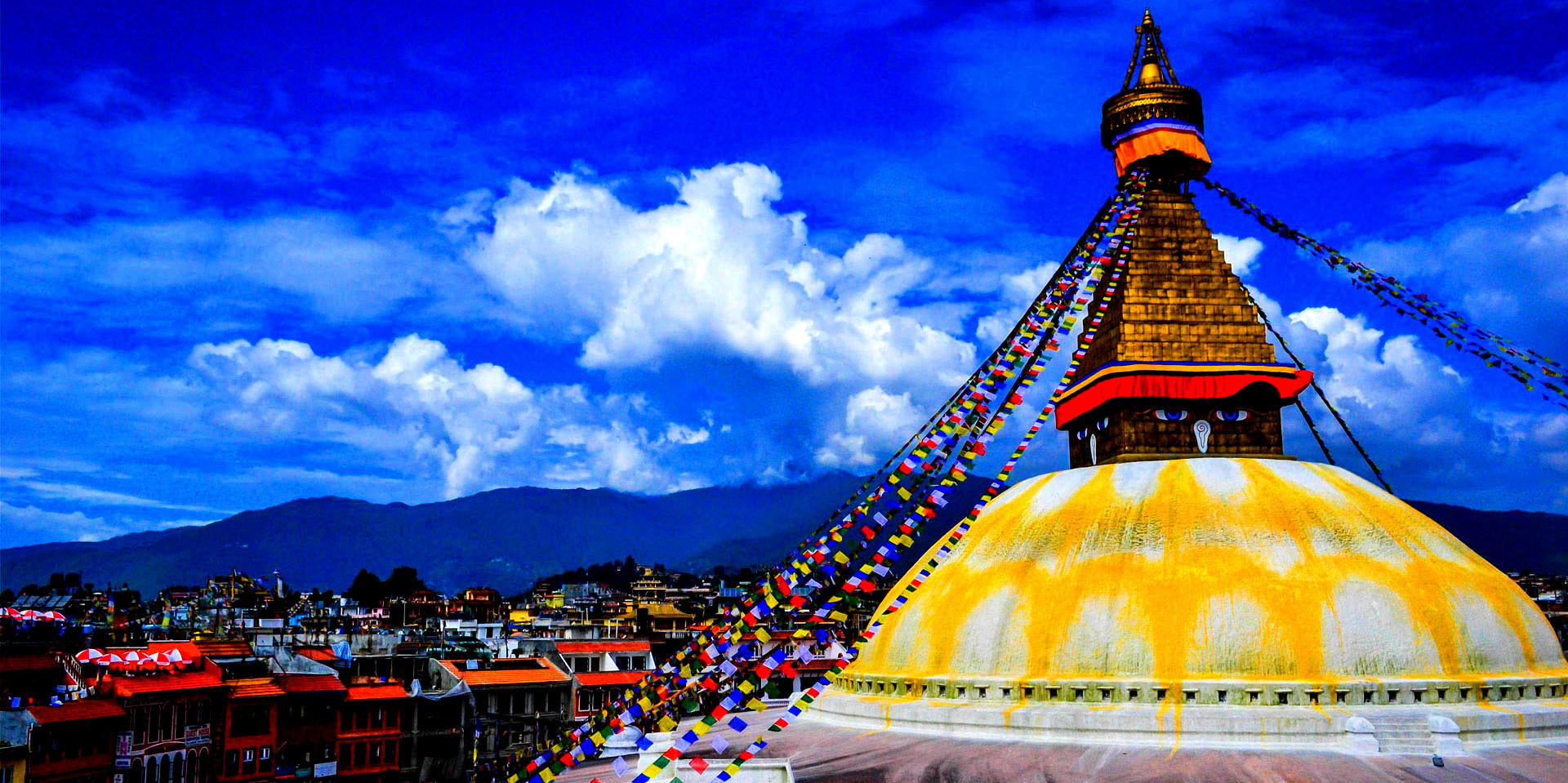
Highlights of Kathmandu
-
Durbar Square: At the core of Kathmandu's historical identity is Durbar Square, a UNESCO World Heritage site filled with palaces, temples, and courtyards from the era of the Malla kings and the Shah dynasty. The square was heavily damaged during the 2015 earthquake, but restoration efforts continue to preserve its historical significance.
-
Swayambhunath Stupa: Known as the Monkey Temple, Swayambhunath is one of the most ancient and revered holy shrines in Kathmandu. Perched on a hilltop, it offers panoramic views of the city, and its stupa is a fine example of Buddhist architecture.
-
Pashupatinath Temple: This sacred Hindu temple on the banks of the Bagmati River is dedicated to Lord Shiva and is also a UNESCO World Heritage site. It is a major pilgrimage site for Hindus from all over the world, especially during the festival of Shivaratri.
-
Thamel: As the tourist hub of Kathmandu, Thamel is buzzing with energy, filled with shops, boutiques, restaurants, and hotels. It's a great place to pick up traditional handicrafts, trekking gear, or to enjoy various cuisines from around the world.
-
Boudhanath Stupa: One of the largest stupas in the world, Boudhanath is a focal point for Tibetan Buddhism in Nepal. Surrounded by monasteries, this stupa is a peaceful place where pilgrims perform kora (walking meditation) around the stupa.
-
The Garden of Dreams: A neoclassical historical garden, it is the perfect place to escape from the hustle and bustle of the city. Located in the heart of Kathmandu, it features lush greenery, fountains, and a variety of flora.
Cultural Experience: Kathmandu is not just about places; it's about the experience. The city's vibrant cultural festivals, such as Indra Jatra and Dashain, offer a deep dive into the local traditions and religious practices. The streets of Kathmandu are a live museum of Hinduism and Buddhism, where every corner tells a story, every festival brings joy, and every face has a smile that welcomes you to delve deeper into this enchanting city.
Kathmandu is a city where the past enriches the present and where every visitor can find something to inspire and awe. Whether it's the architectural marvels, the spiritual serenity, or the chaotic charm of the local markets, Kathmandu promises a truly memorable experience. For travelers seeking to explore the depths of Nepali culture, Kathmandu is an indispensable destination.
Pokhara
Pokhara is one of Nepal's most enchanting destinations, offering a serene yet vibrant atmosphere that appeals to both adventurers and those seeking tranquility. This city is famed for its stunning natural beauty and its proximity to the Annapurna Range, which makes it a key starting point for trekkers. With its beautiful lakes, breathtaking mountain views, and a plethora of activities, Pokhara is a place where nature and adventure harmoniously blend.
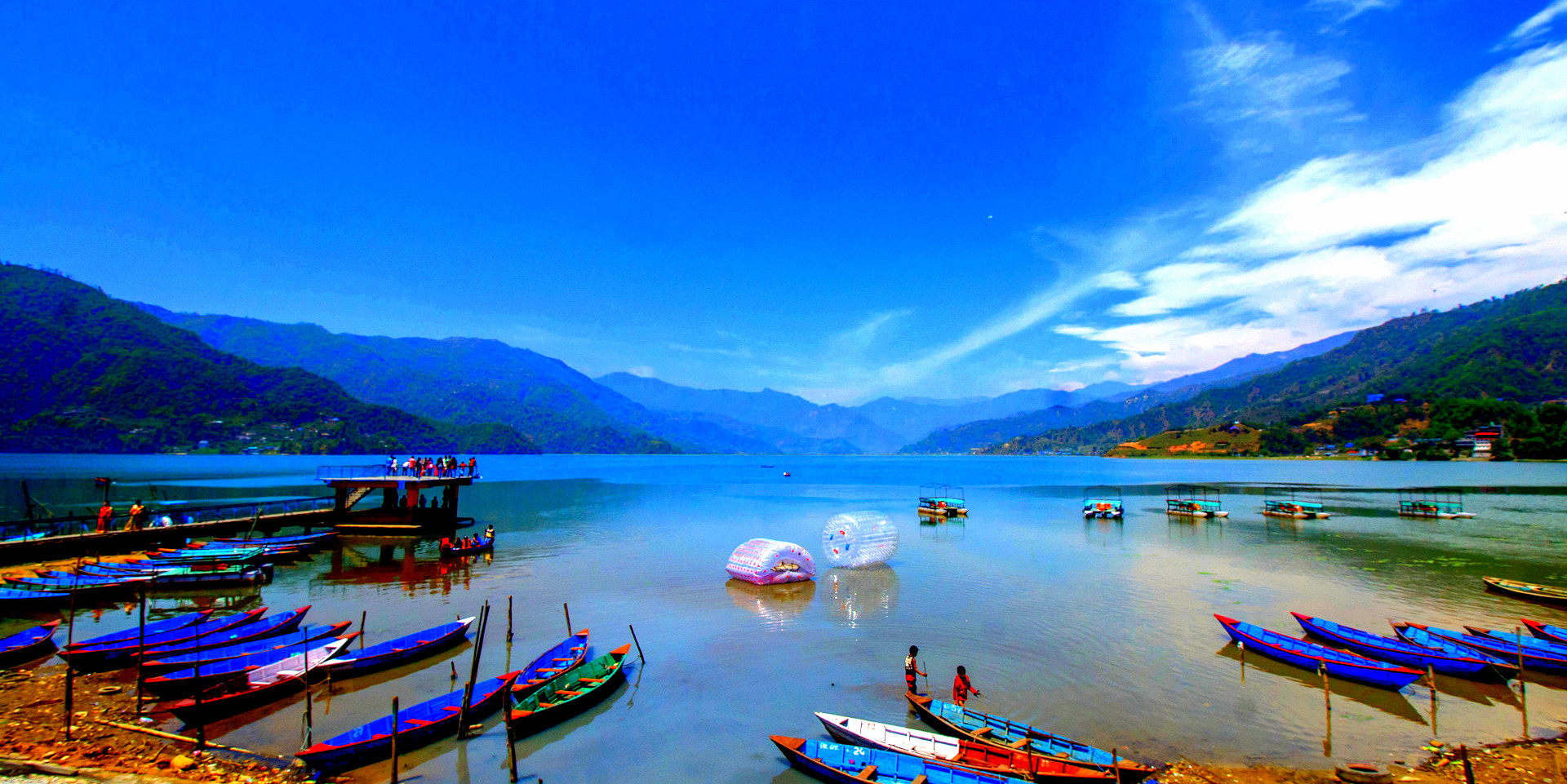
-
Natural Beauty: Pokhara is notably renowned for its picturesque Phewa Lake, the second largest lake in Nepal, where visitors can enjoy boating while taking in the reflection of the Machhapuchhre and other mountain peaks in the clear waters. The city is also home to the tranquil Begnas Lake and Rupa Lake, less crowded but equally beautiful with ample opportunities for fishing and swimming.
-
Adventure Sports: As a hub for adventure enthusiasts, Pokhara offers a range of activities including paragliding in Pokhara, which is considered one of the best in the world due to its stunning overhead views of the Himalayas and the lakes below. The city is also known for its opportunities for skydiving, zip-lining, and ultra-light flights that provide a unique perspective of the beautiful landscape.
-
Trekking Gateways: Pokhara is the gateway to some of the world's best treks, including the famous Annapurna Circuit. Trekkers can embark from here on journeys that take them through diverse landscapes from lush subtropical forests to arid high mountain landscapes, experiencing rural Nepali life along the way.
-
Cultural Attractions: While the natural beauty might steal the limelight, Pokhara also offers significant cultural attractions. The International Mountain Museum provides insights into the mountains of Nepal and the history of mountaineering. The Gurkha Memorial Museum pays homage to the Gurkha soldiers, and various Tibetan villages around Pokhara offer a chance to learn about the culture of the Tibetan diaspora in Nepal.
-
Relaxation and Leisure: For those looking to unwind, the Lakeside district offers a relaxed atmosphere with its array of cafes, restaurants, and bars, all offering views of Phewa Lake. The area is perfect for strolls, shopping for local handicrafts, or enjoying a sunset by the lake.
-
Spiritual Sites: The Peace Pagoda, situated atop a hill on the southern shore of Phewa Lake, offers panoramic views of the lake, the city, and the peaks of the Annapurna and Dhaulagiri ranges. The pagoda is a symbol of peace and a popular site for both sunrise and sunset views.
Pokhara combines the allure of natural beauty with the thrills of adventure sports and the charm of its cultural offerings, making it an essential destination for any traveler to Nepal. Whether you are seeking thrilling activities, peaceful nature walks, or cultural immersion, Pokhara has something special to offer.
Lumbini
Lumbini is revered as one of the most spiritual sites in the world, known primarily as the birthplace of Siddhartha Gautama, who became the Buddha. Situated in the southwestern Terai plains of Nepal, this sacred area attracts pilgrims and visitors from around the globe who come to delve into the origins of Buddhism and to experience the profound peace that the site offers.
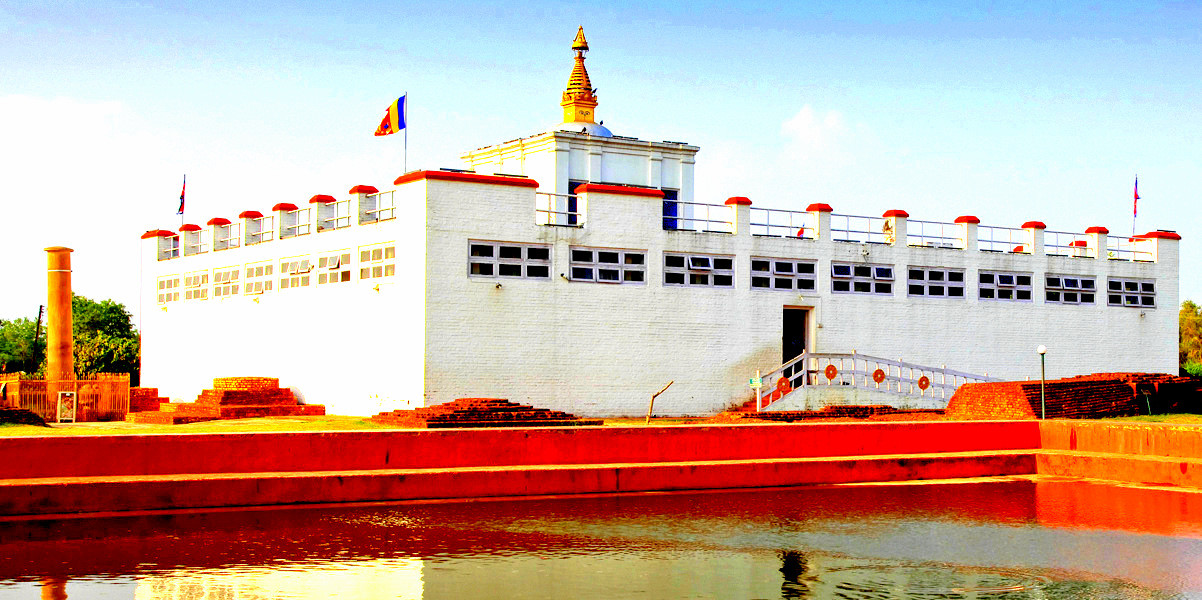
Historical and Spiritual Significance: Declared a UNESCO World Heritage Site, Lumbini is celebrated as the place where Queen Mayadevi gave birth to Siddhartha Gautama in 623 BC. The site holds immense archaeological and religious importance, with numerous artifacts, monasteries, and a museum that chronicles Buddha’s life and the growth of Buddhism. Here, the Lumbini pilgrimage sites provide a tangible connection to the profound events of Buddha's early life.
Major Attractions
-
Mayadevi Temple: This temple is built at the exact spot where Buddha was born. Excavations have revealed ancient ruins and a marker stone that indicates the precise birthplace, making it the heart of Lumbini.
-
Ashoka Pillar: Erected by Emperor Ashoka in 249 BC, this pillar commemorates his pilgrimage to the site and declares Lumbini as the Buddha’s birthplace.
-
The Sacred Garden: Surrounding the temple, this lush, tranquil garden offers a space for meditation and contemplation.
-
Monastic Zone: The area is divided into eastern and western monastic zones, where only monasteries can be built. The eastern zone contains Theravadin monasteries, while the western zone houses Mahayana and Vajrayana monasteries.
Cultural Insights: Lumbini is not just a site of historical importance but also a living center of faith. The monastic zone houses monasteries from various Buddhist nations, each reflecting its country's distinct architectural style. This presents a unique opportunity to witness the global diversity of Buddhist architectural and artistic traditions in a single place.
Spiritual Retreats and Learning: Lumbini also offers spiritual retreats where visitors can engage in meditation and learn about Buddhist teachings in a serene atmosphere. These retreats aim to provide insight into Buddhist philosophy and practices that encourage inner peace and mindfulness.
Visitor Experience: Lumbini is designed to foster a sense of peace and introspection. Paths for walking, ponds filled with lotus flowers, and quiet meditation zones contribute to an atmosphere of serenity. It’s a place where visitors can step away from the hustle and bustle of modern life and reflect on deeper spiritual questions.
Community and Festivals: The area around Lumbini is also rich in culture with local villages that often celebrate Buddhist festivals with great fervor. Visitors have the opportunity to participate in these local celebrations and understand more about the daily lives and practices of Nepal’s Buddhist communities.
Lumbini stands out as a beacon of peace and spirituality, attracting those who are interested in the origins of Buddhism or seeking personal peace and spiritual growth. It offers a profound and transformative experience for all who visit, providing not only historical context but also a chance to engage deeply with the teachings that originated in this sacred place.
Chitwan National Park
Chitwan National Park is one of Nepal's most vibrant and popular wildlife sanctuaries, renowned for its biodiversity and as a successful conservation model. Located in the Terai lowlands of Nepal, it is easily accessible from major cities like Kathmandu and Pokhara, making it a favorite among nature lovers and wildlife enthusiasts.
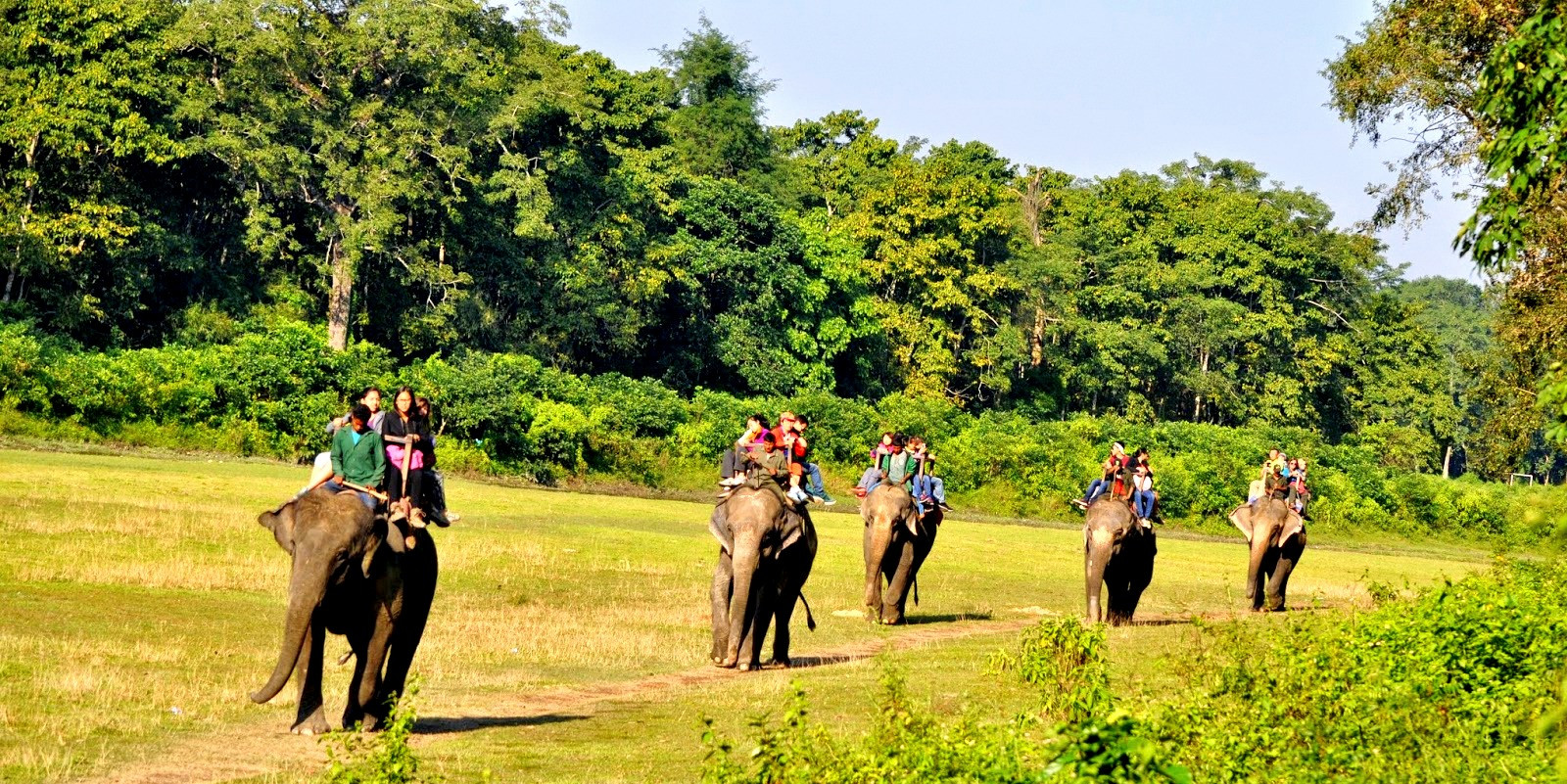
Ecological Significance: Chitwan National Park is a UNESCO World Heritage Site that covers a sprawling area of 932 square kilometers. It is home to dense forests, grasslands, and wetlands that create a diverse habitat for a wide array of wildlife. The park is famous for its success in conserving the one-horned rhinoceros and the Bengal tiger, among other wildlife.
Major Wildlife Attractions
-
One-Horned Rhinoceros: Chitwan is one of the few remaining strongholds where the vulnerable one-horned rhinoceros can be seen in the wild.
-
Bengal Tiger: Although elusive, the Bengal tiger is another major draw for visitors to Chitwan, with the park being one of the best places in Nepal to spot these magnificent big cats.
-
Elephant and Jeep Safaris: Safaris are a popular way to explore the park, offering close encounters with Chitwan's diverse fauna, including deer, monkeys, leopards, various reptiles, and hundreds of bird species.
Activities and Experiences
-
Jeep Safaris: Guided jeep tours provide an opportunity to venture deeper into the park's core areas, increasing the chances of spotting rare wildlife.
-
Canoe Rides: A peaceful canoe trip down the Rapti or Narayani rivers offers a chance to observe aquatic life and birds up close.
-
Bird Watching: With over 500 bird species, including several endangered varieties, Chitwan is a paradise for bird watchers.
-
Walking Tours: Guided nature walks are available, allowing visitors to experience the park's ecosystem more intimately while learning about the flora and fauna.
Cultural Interaction: Chitwan also offers cultural experiences such as visits to nearby Tharu villages. The Tharu people are indigenous to the Terai region, and their unique culture and lifestyle are integral to the local heritage. Cultural performances, including traditional Tharu dances, provide insights into the human aspect of Chitwan.
Accommodation and Sustainability: Chitwan accommodation ranges from luxury lodges to eco-friendly resorts, many of which are involved in conservation efforts and community projects. These accommodations offer comfortable stays while promoting sustainable tourism practices that benefit both the environment and the local communities.
Visitor Impact and Conservation: Tourism in Chitwan plays a crucial role in the park's conservation efforts by providing the funds necessary for wildlife protection and creating jobs for local people. Visitors are encouraged to respect wildlife guidelines to minimize their impact on the natural environment.
Chitwan National Park offers a compelling blend of adventure, wildlife, and cultural richness, making it a must-visit destination for anyone traveling to Nepal. Its efforts in conservation and community involvement set an example of how tourism can contribute positively to environmental preservation and local empowerment.
Everest Base Camp
Everest Base Camp is one of the most sought-after destinations for trekkers around the world. Located in the Solukhumbu District of Nepal, this iconic trek not only offers breathtaking views of the world's highest peak, Mt. Everest, but also provides an immersive experience into the culture of the Sherpa people, the famed mountain dwellers of the Himalayas.
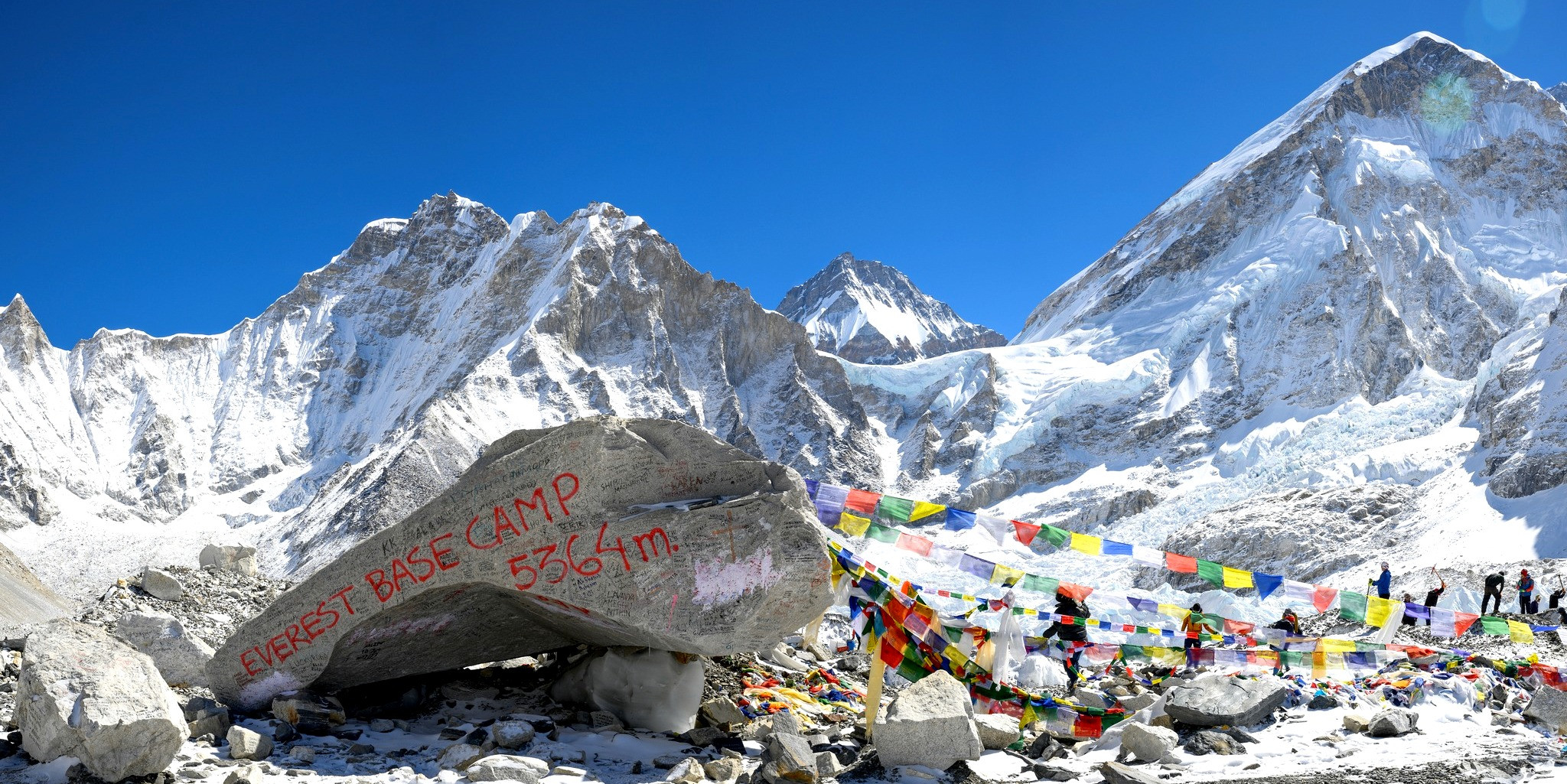
Trek Overview: The trek to Everest Base Camp typically starts with a flight from Kathmandu to the small mountain airstrip at Lukla, a thrilling introduction to the adventure that awaits. From Lukla, trekkers pass through picturesque Sherpa villages like Namche Bazaar, Tengboche, Dingboche, and Gorakshep, culminating at the base camp itself. The journey usually takes about two weeks, allowing for proper acclimatization to the high altitude.
Scenic and Cultural Highlights
-
Namche Bazaar: Often referred to as the gateway to the high Himalayas, this bustling market town offers spectacular views of Mt. Everest and is an ideal spot for acclimatization.
-
Tengboche Monastery: Situated at 3,867 meters, it is one of the largest monasteries in the Khumbu region and offers panoramic views of the Himalayan giants including Everest, Ama Dablam, and Lhotse.
-
Kala Patthar: Though not part of the base camp itself, many trekkers opt to climb this nearby peak for the best views of Everest's south face.
Physical Challenge and Preparation: Trekking to Everest Base Camp is physically demanding due to the high altitude and rugged terrain. Proper preparation is essential, including physical conditioning and acquiring appropriate gear. Everest trekking guides are invaluable for their expertise in high-altitude trekking and knowledge of the local terrain and culture.
Environmental and Climatic Conditions: The trek exposes adventurers to a wide range of climates, from temperate forested valleys to glacial moraines and barren rockscapes. Weather conditions can change rapidly, and trekkers must be prepared for the extremes that high altitudes can bring.
Cultural Interaction: The trek is also a cultural journey, offering insights into the rich Sherpa culture. Villages along the way have monasteries, chortens, and prayer flags fluttering in the wind, reflecting the deep-rooted Buddhist traditions of the local communities. Interaction with the Sherpa people offers a deeper understanding of how life thrives in the shadow of the world's highest peaks.
Impact of Tourism: While tourism has brought economic benefits to the local Sherpa communities, it also poses challenges such as waste management and environmental degradation. Efforts are continuously made to ensure sustainable practices that minimize the ecological footprint of trekkers.
Why Choose Everest Base Camp: The trek to Everest Base Camp is not just a physical challenge; it's an expedition that offers awe-inspiring landscapes, a chance to test one’s limits, and an opportunity to immerse oneself in the high-altitude world of the famous Sherpa people. It's a transformative experience that many describe as a journey of a lifetime.
Embarking on this trek not only fulfills the dream of standing at the base of the world's highest mountain but also provides a profound sense of accomplishment and an enhanced appreciation for one of the planet's most spectacular landscapes.
Bhaktapur
Bhaktapur, often referred to as Nepal's cultural gem, is a remarkable city rich in ancient arts, religious values, and fabulous cultural festivities. Nestled in the Kathmandu Valley, it remains one of the best-preserved city centers in Nepal and is renowned for its traditional architecture, colorful festivals, and intricate handicrafts.
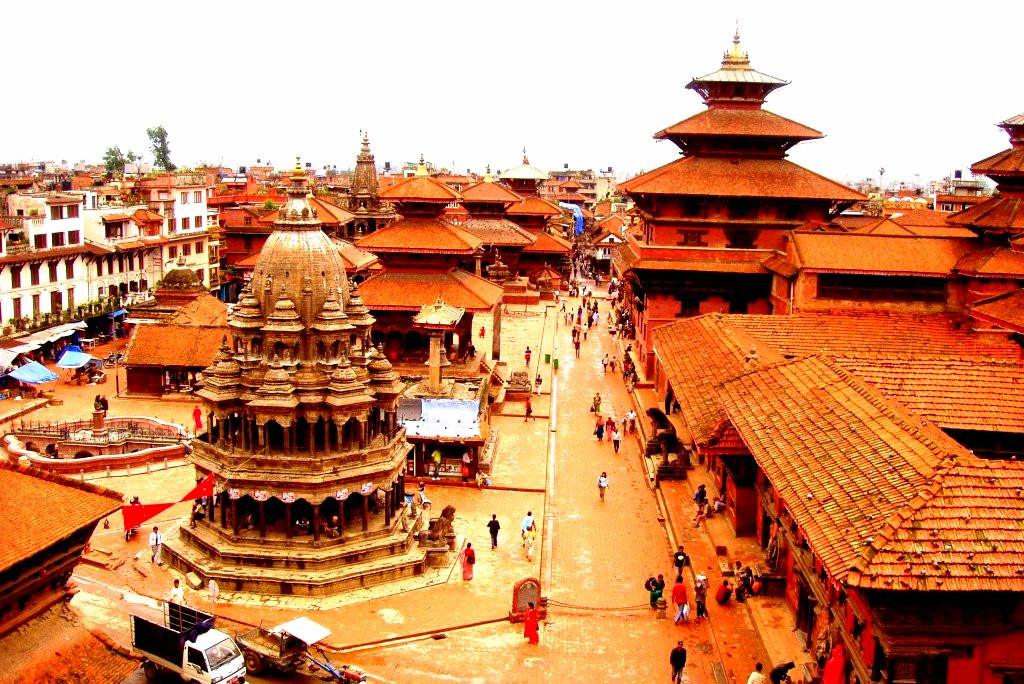
Historical Significance: Bhaktapur was once the capital of Nepal during the great Malla Kingdom until the second half of the 15th century and is a UNESCO World Heritage Site. It is filled with monuments, mostly terra-cotta with carved wood columns, palaces and temples with elaborate carvings, gilded roofs, and open courtyards. The city is dotted with pagodas and religious shrines.
Major Attractions
-
Bhaktapur Durbar Square: The plaza in front of the royal palace is dotted with temples, illustrated by architectural showpieces like the Lion Gate, the Golden Gate, and the Palace of Fifty-five Windows, leading to its reputation as the most beautiful city square in all of Nepal.
-
Nyatapola Temple: This five-story pagoda was constructed in 1702 during the reign of King Bhupatindra Malla and stands as a significant example of temple architecture in Nepal.
-
Dattatreya Temple: Built from the wood of a single tree in the 15th century, this temple is an outstanding structure featuring detailed woodcarvings significant to Nepalese culture.
Cultural and Artistic Heritage: Bhaktapur is famous for its yogurt (Juju Dhau), pottery, and woodcarving industries. The Pottery Square, where visitors can observe traditional potters at work, spinning clay pots on wheels powered by their feet, is a testament to the city’s rich craft heritage. Bhaktapur's artisans are also known for their skills in paper making and mask making.
Festivals and Celebrations: The city comes alive during various festivals celebrated throughout the year, including the Bisket Jatra, an annual event that marks Nepalese New Year with a chariot procession and high-spirited festivities. This and other festivals provide insight into the traditions and community spirit of Bhaktapur.
Visitor Experience: Strolling through Bhaktapur is like stepping back in time, with its well-preserved cultural environment offering a stark contrast to the more commercialized capitals of Kathmandu and Pokhara. The city imposes a small entrance fee used to fund preservation projects, helping maintain its ancient sites.
Bhaktapur provides an intimate experience of a city that values its past while still welcoming visitors from around the globe. Its atmosphere of warmth and authenticity makes it a must-visit for anyone interested in experiencing the living history of Nepal.
Tips for Top 6 Trending Travel Destinations in Nepal
When traveling to popular destinations in Nepal, here are some combined tips to ensure a rewarding and respectful experience:
-
Cultural Sensitivity: Always dress modestly and seek permission before photographing people or religious sites. It's important to behave respectfully, especially at spiritual or historical locations.
-
Adventure Safety: If engaging in adventure sports, use companies with robust safety records. Check weather conditions regularly, as they can change quickly, particularly in mountainous areas.
-
Health Precautions: Stay hydrated and protected from the sun, and be cautious about food and water hygiene to avoid illness. In tropical and subtropical zones, use mosquito repellent and consider malaria precautions.
-
Environmental Responsibility: Support eco-friendly tours and conservation efforts, carry a reusable water bottle, and avoid single-use plastics to help preserve the natural environment.
-
Acclimatization and Preparation: For high-altitude destinations, take time to acclimatize properly and consider hiring local guides or porters to enhance your experience and support the local economy.
-
Insurance: Ensure you have adequate travel insurance that covers any specific activities planned, such as high-altitude trekking or adventure sports.
-
Local Interaction: Learning a few phrases in Nepali can enrich interactions with locals. Consider hiring local guides for in-depth knowledge about the destinations.
-
Cultural Events: Try to visit during local festivals for a deeper cultural immersion. Support local artisans by purchasing traditional crafts as souvenirs.
-
Packing Appropriately: Bring appropriate clothing for varying temperatures—light clothing for daytime and warmer layers for cooler mornings and evenings. Tools like binoculars can enhance experiences such as bird watching.
By adhering to these tips, travelers can enjoy a more immersive and responsible visit, ensuring both their safety and the preservation of Nepal's rich cultural and natural heritage.
Ideal Time for Top 6 Trending Travel Destinations in Nepal
When planning a trip to Nepal's trending destinations, selecting the right season is crucial for a rewarding experience. Here’s a breakdown of what each season offers for visiting these popular areas:
-
Spring (March to May): Spring is one of the best times for visiting. The weather is warm, and nature is in full bloom, providing vibrant landscapes and clear skies. This season is ideal for those interested in outdoor activities such as trekking and sightseeing, as the mountain views are exceptionally clear. Cultural festivals are also abundant during spring, offering a glimpse into local traditions and celebrations.
-
Summer (June to August): Summer coincides with the monsoon season in many parts of Nepal, which can make travel challenging due to heavy rains, landslides, and leeches in the trekking paths. However, the rain washes the landscape, making the forest lush and vibrant, which is ideal for photographers and nature enthusiasts. Wildlife viewing in national parks can also be fruitful during this time, as animals are more likely to be seen near water sources.
-
Autumn (September to November): Autumn is another prime season for visiting, characterized by clear skies and moderate temperatures. This is perhaps the best time for trekking as the trails are dry and the visibility is high. Major festivals like Dashain and Tihar occur during autumn, providing an excellent opportunity for visitors to experience Nepal’s rich cultural tapestry in full swing.
-
Winter (December to February): Winter is marked by cold weather, especially at higher altitudes, which might not be ideal for high-altitude trekking due to snow and ice. However, lower altitude walks and sightseeing tours can still be enjoyable. Winter is less crowded, so visitors can enjoy a more peaceful experience at popular tourist sites. The skies are still clear, offering lovely mountain views, albeit in colder conditions.
By choosing the appropriate season for your activities and interests, you can enhance your travel experience in Nepal, enjoying the natural beauty and cultural richness of the region under the best possible conditions.
The 6 most popular travel destinations in Nepal provide a wide range of experiences. Travelers of every kind will find something in the spiritual history of Lumbini, the quiet scenery of Pokhara, and the cultural wealth of Kathmandu Valley and Bhaktapur, as well as the daring Everest Base Camp routes and the wildlife of Chitwan National Park. Every location offers a distinctive view of Nepal's cultural history and natural beauty. Selecting the appropriate season for your trip might increase your pleasure, hence each visit across Nepal becomes more of a serious investigation of one of the most lovely nations on earth rather than simply a vacation.
FAQs for Top 6 Trending Travel Destinations in Nepal
Q: What is the best time to visit Nepal?
A: The best time to visit Nepal is during the autumn months of September to November when the weather is clear and dry, making it ideal for trekking and sightseeing. Spring (March to May) is also a great time with warm weather and blooming flowers.
Q: Do I need a visa to visit Nepal?
A: Most foreign nationals require a visa to enter Nepal, which can be obtained on arrival at the airport in Kathmandu or at land border crossings. Be sure to check the latest visa requirements from official resources or your local Nepalese embassy.
Q: Are there any cultural customs I should be aware of when visiting Kathmandu Valley?
A: Yes, it's important to dress modestly, especially when visiting religious sites. Always remove your shoes before entering a temple or a local's home.
Q: What are some must-do activities in Pokhara?
A: Must-do activities include trekking in the Annapurna region, paragliding, and boating on Phewa Lake. Don’t miss the sunrise view from Sarangkot.
Q: How much time should I allocate for a visit to Lumbini?
A: A full day is sufficient to explore the major sites and monasteries in Lumbini, although a longer stay can be rewarding if you are deeply interested in Buddhist culture and history.
Q: What wildlife can I expect to see in Chitwan National Park?
A: Chitwan is home to the Bengal tiger, one-horned rhinoceros, various deer species, sloth bears, and an array of bird species. Jungle safaris provide the best chance to see these animals.
Q: How physically demanding is the trek to Everest Base Camp?
A: The trek to Everest Base Camp is considered challenging. It requires good physical fitness and acclimatization to high altitudes. Preparation should include physical training months before the trek.
Q: What are some highlights of Bhaktapur to visit?
A: Key highlights include Bhaktapur Durbar Square, Nyatapola Temple, and Pottery Square. Be sure to try the local specialty, Juju Dhau (king yogurt), while there.
For details on Nepal Tour.
If you are looking for different kinds of Nepal Packages, feel free to contact us.
